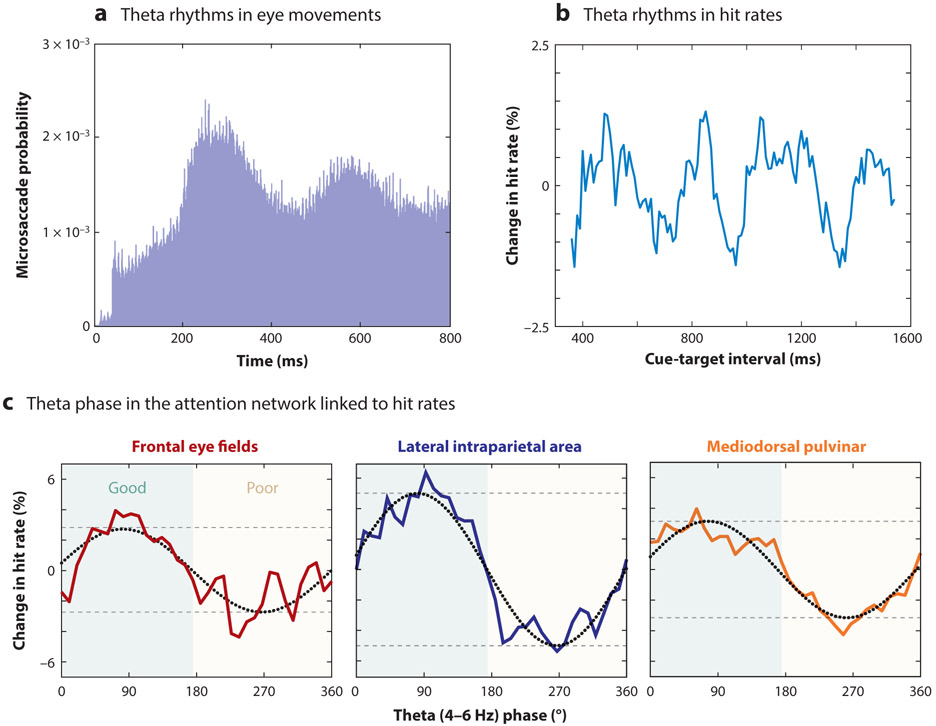Figure 4.
The role of theta rhythms in environmental sampling. Both the sensory and the motor aspects of environmental sampling are linked to theta rhythms. Evidence of theta-rhythmic sampling in monkeys, for example, has been observed (a) in the probability of microsaccades (panel adapted with permission from Bosman et al. 2009) and (b) in hit rates at different time points following a spatial cue (panel adapted with permission from Fiebelkorn et al. 2018). (c) Behavioral oscillations have been linked to the phase of theta-band activity (3–8 Hz) in both higher-order cortical and subcortical nodes of the attention network (panel adapted with permission from Fiebelkorn et al. 2018, 2019). Theta rhythms organize neural activity in the attention network into alternating periods of either enhanced (i.e., during the “good” theta phase; green shaded area) or relatively diminished (i.e., during the “poor” theta phase; yellow shaded area) perceptual sensitivity. These plots show behavioral performance as a function of oscillatory phase in the frontal eye fields (red solid line), the lateral intraparietal area (blue solid line), and the mediodorsal pulvinar (orange solid line). Phase-detection functions (colored solid lines) were fit with one-cycle sine waves (black dotted lines), and the amplitude of these sine waves (distance between dashed gray lines) provided an estimate of the strength of the relationship between theta phase and the likelihood of visual target detection. We have proposed that periods of enhanced perceptual sensitivity are associated with attention-related sampling at a behaviorally relevant location (e.g., a cued location), while periods of relatively diminished perceptual sensitivity are associated with an increased likelihood of attentional shifts and/or eye movements (Fiebelkorn & Kastner 2019b).

